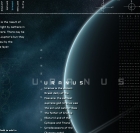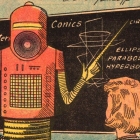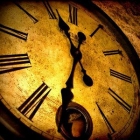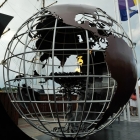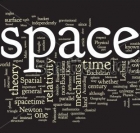-
 +19 +1
+19 +1We could detect a malfunctioning warp drive on an alien starship
Faster-than-light warp drives are theoretically possible to build, and if aliens are using them, we should be able to detect the gravitational waves produced when one goes wrong
-
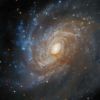 +36 +1
+36 +1NASA Selects New Crew for Next Simulated Mars Journey - NASA
NASA has selected a new crew of four volunteers to participate in a simulated mission to Mars within a habitat at the agency’s Johnson Space Center in Houston.
-
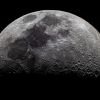 +25 +1
+25 +1Overlooked Apollo data from the 1970s reveals huge record of 'hidden' moonquakes
A reanalysis of 50-year-old Apollo mission data long abandoned by NASA has revealed 22,000 previously unrecognized moonquakes, almost tripling the known number of seismic lunar events.
-
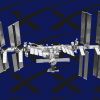 +27 +1
+27 +1FCC Denies Starlink Low-Orbit Bid for Lower Latency
Agency says SpaceX craft could curb International Space Station operations
-
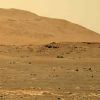 +19 +1
+19 +1NASA is looking for people to test out its Mars simulator for a year
The agency is accepting applicants for the second cohort of its Mars simulator mission. Participants will live and work from a 3D-printed, 1,700-square-foot facility at NASA's Houston space center.
-
 +22 +1
+22 +1Death, Lonely Death
We thought we knew how Voyager would end. The power would gradually, inevitably, run down. The instruments would shut off, one by one. The signal would get fainter. Eventually either the last instrument would fail for lack of power, or the signal would be lost. We didn’t expect that it would go mad.
-
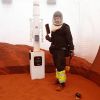 +15 +1
+15 +1NASA is looking for volunteers to live in its Mars simulation for a year
NASA put out an open call on Friday for volunteers to participate in its yearlong Crew Health and Performance Exploration Analog (CHAPEA 2) mission. The space agency will select four people for a crew that will be housed in its 1,700-square-foot 3D-printed habitat in Houston.
-
 +25 +1
+25 +1Flipped Bit Could Mark The End Of Voyager 1‘s Interstellar Mission
Flight controllers have determined that the problem lies within the one remaining FDS on board (the backup FDS failed back in 1981), most likely thanks to a single bit of corrupted memory.
-
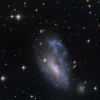 +19 +1
+19 +1NASA to Study Effects of Radio Noise on Lunar Science - NASA
In February 2024, Intuitive Machines’ IM-1 mission will launch to the Moon’s South Polar region, as part of NASA’s Commercial Lunar Payload Services, or CLPS,
-
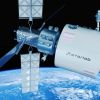 +41 +1
+41 +1SpaceX's Starship to launch 'Starlab' private space station in late 2020s
The giant rocket will loft Starlab in a single launch.
-
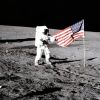 +35 +1
+35 +1Why there is a new global race to the moon
Globally, more than 100 lunar missions are expected to take place by 2030, according to the European Space Agency.
-
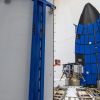 +21 +1
+21 +1First U.S. lunar lander in more than 50 years rockets toward the moon
The first U.S. lunar lander in more than 50 years rocketed toward the moon Monday, launching private companies on a space race to make deliveries for NASA and other customers.
-
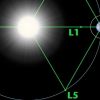 +49 +1
+49 +1Lagrange Points Could Become Battlegrounds in a New Space Race
A new 'space race' is heating up between the US and China in space exploration, and Lagrange points are emerging as a battleground.
-
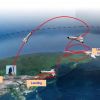 +49 +1
+49 +1China’s Spaceplane Has Released Multiple Mystery Objects In Orbit
The nature of the objects is unclear, but at least some of them appear to be transmitting signals of different kinds.
-
 +50 +1
+50 +1Japan may delay its Mars moon sampling mission MMX due to rocket problems
JAXA needs to get its H3 rocket flying successfully early next year
-
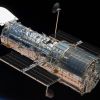 +46 +1
+46 +1Hubble back in service after gyro scare—NASA still studying reboost options
NASA is still evaluating Hubble servicing studies from SpaceX and other companies.
-
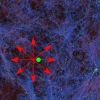 +19 +1
+19 +1A new possible explanation for the Hubble tension
The universe is expanding. How fast it does so is described by the so-called Hubble-Lemaitre constant. But there is a dispute about how big this constant actually is: Different measurement methods provide contradictory values.
-
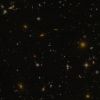 +34 +1
+34 +1Elon Musk’s SpaceX Starship rocket and spacecraft lost in second test flight | CNN
SpaceX reached several milestones in its Starship rocket system’s second integrated test flight before losing the booster and spacecraft.
-
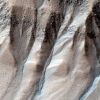 +48 +1
+48 +1AI chemist finds molecule to make oxygen on Mars after sifting through millions
The system calculated more than 3.7 million molecules it could make from six different metallic elements in the rocks.
-
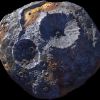 +41 +1
+41 +1NASA's robotic prospectors are helping scientists understand what asteroids are made of – setting the stage for miners to follow someday
Upcoming NASA missions will help scientists understand the composition of asteroids – which could inform companies one day hoping to commercially mine asteroids.
Submit a link
Start a discussion
